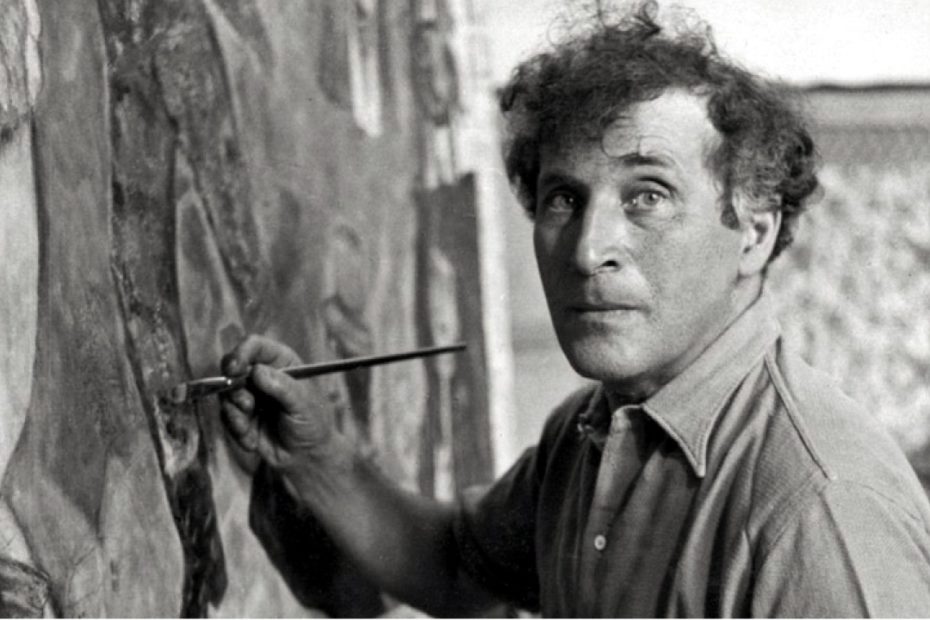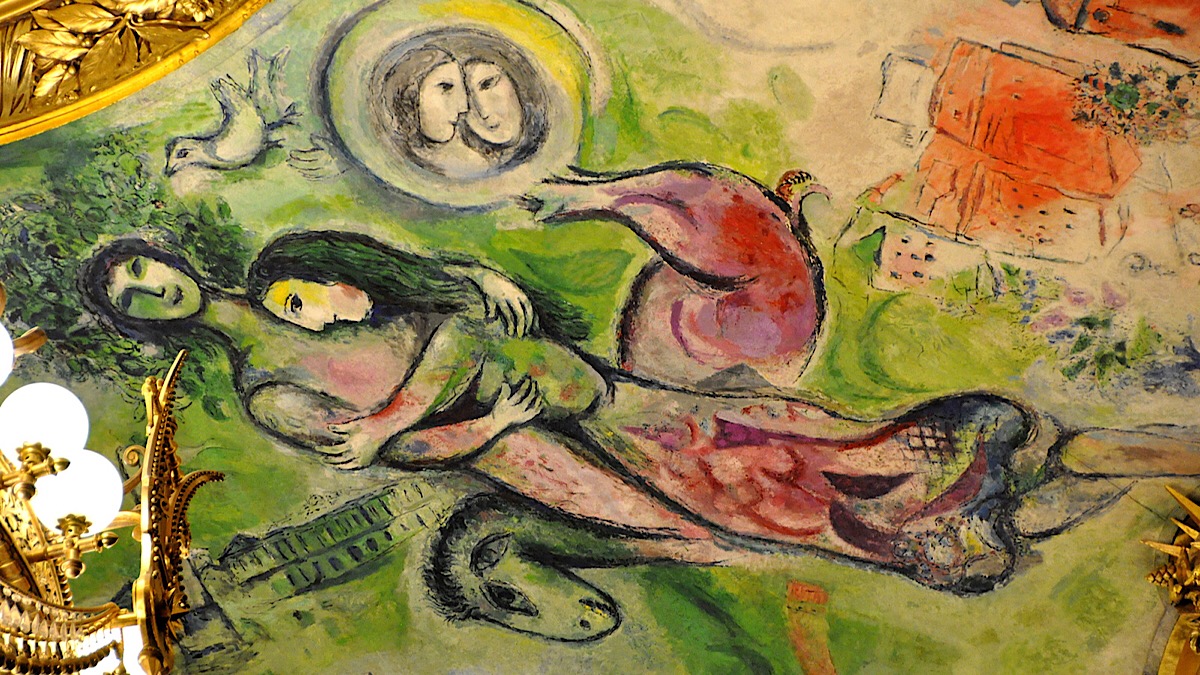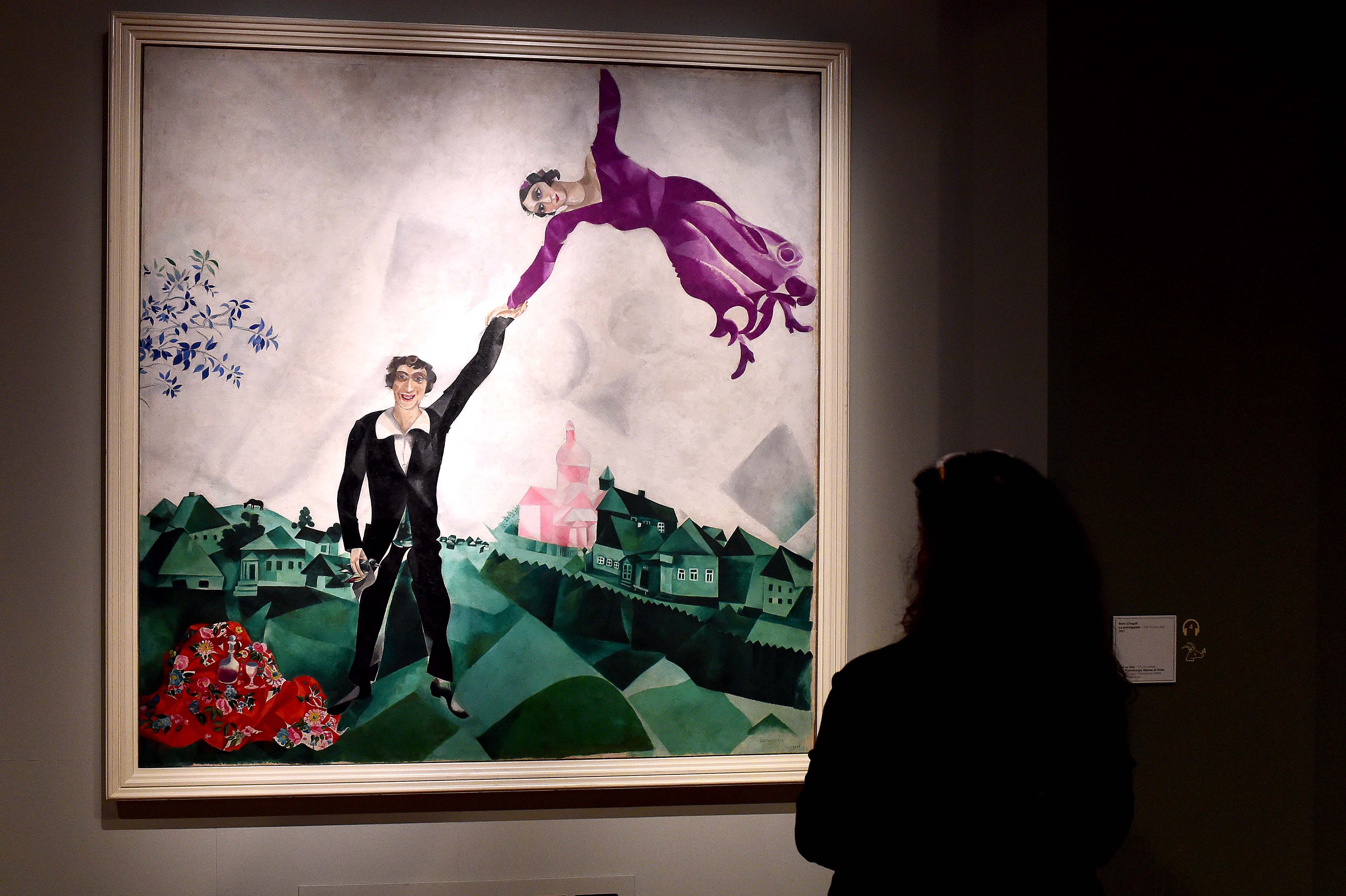
Have you ever wanted to know more about Chagall’s life and the magic of his works?
In this post, I take you on a discovery of Marc Chagall‘s colourful universe, telling you about five crucial phases of his existence.
Life of Chagall: 5 things to know

1. ORIGINS OF CHAGALL
Marc Chagall, born on 7 July 1887 in Vitebsk, a city now located in Belarus, embarked on his artistic journey in faraway Russia. Between 1907 and 1910, his thirst for knowledge led him to study at the Imperial School for the Protection of the Arts in Petersburg, and then under Léon Bakst.
The allure of Paris soon captured him, leading him to meet key figures in the art world such as Guillaume Apollinaire and Robert Delaunay. Here, Chagall immersed himself in the colour of the Fauves and Cubism, which would leave a lasting impression on his style.
2. CHAGALL’S FIRST EXHIBITIONS
1912 was an important year for Chagall, as he participated in the Salon des Indépendants and the Salon d’Automne. His solo debut came shortly afterwards, in 1914, at the Galerie Der Sturm in Berlin.
With the outbreak of war, Chagall returned to Vitebsk, and in 1918 he took up the position of Fine Arts Commissioner. During this period, he founded the Institute of Modern Art, but creative differences with supporters of Suprematism forced him to resign in 1920.
His artistic adventure then continued in Moscow, where he created his first set designs for the State Jewish Theatre.
3. CHAGALL’S TRAVELS AND SUCCESS
After a brief stop in Berlin, Chagall returned to Paris in 1923, where he met the art publisher Ambroise Vollard. In this same year he also produced the work entitled ‘The Green Violinist‘.
In 1924, he had a solo exhibition at the Galerie Barbazanges-Hodebert.
During the 1930s, his restless spirit led him to travel through Palestine, Holland, Spain, Poland and Italy, exploring new artistic horizons.
In 1933, his creativity was celebrated in a large retrospective organised by the Kunsthalle Basel.
4. THE UNITED STATES AND THE RETURN TO EUROPE
With the outbreak of World War II, Chagall sought refuge in the United States. Here, in 1946, the Museum of Modern Art in New York – MoMA dedicated a retrospective exhibition showing a considerable number of works.
Returning to Europe in 1948, Chagall settled permanently in France, exhibiting in prestigious galleries in Paris, Amsterdam and London.
5. PUBLIC COMMISSIONS
The 1950s and 1960s are periods of fervent creativity. Chagall also began to create sculptures and received prestigious commissions. These include the stained glass windows for the Hadassah-Hebrew University Medical Center synagogue in Jerusalem (1962), the ceiling of the Paris Opéra (1964), and the stained glass windows for the United Nations building in New York (1964). A decade of remarkable achievements culminated with a dedicated exhibition at the Louvre (1977-78), celebrating the works created between 1967 and 1977.
Chagall’s life ended in Saint Paul de Vence, France, on 28 March 1985. That year, the Philadelphia Museum of Art paid tribute to the master with a significant retrospective.

Through the swirl of colours and shapes, Marc Chagall’s legacy continues to shine, revealing a reality steeped in dreams and poetry, tracing a path followed by countless contemporary artists.

